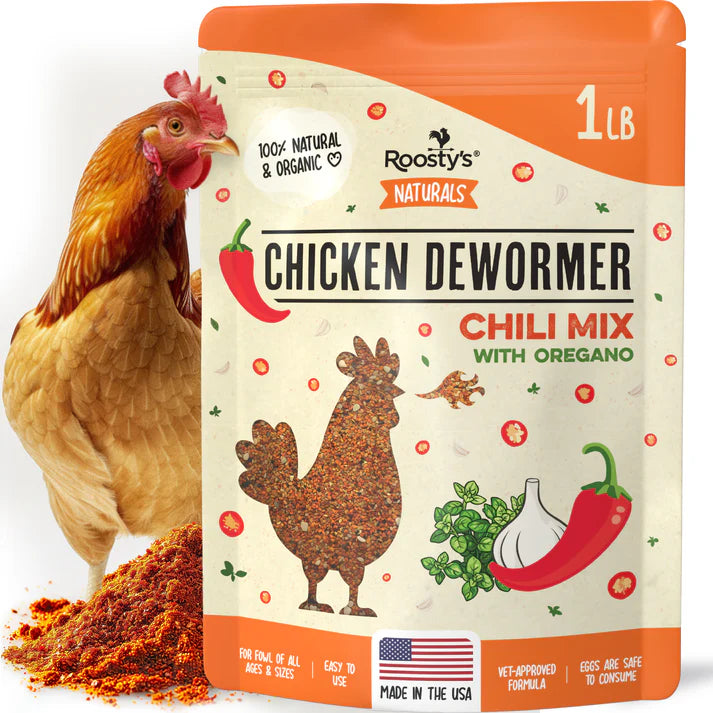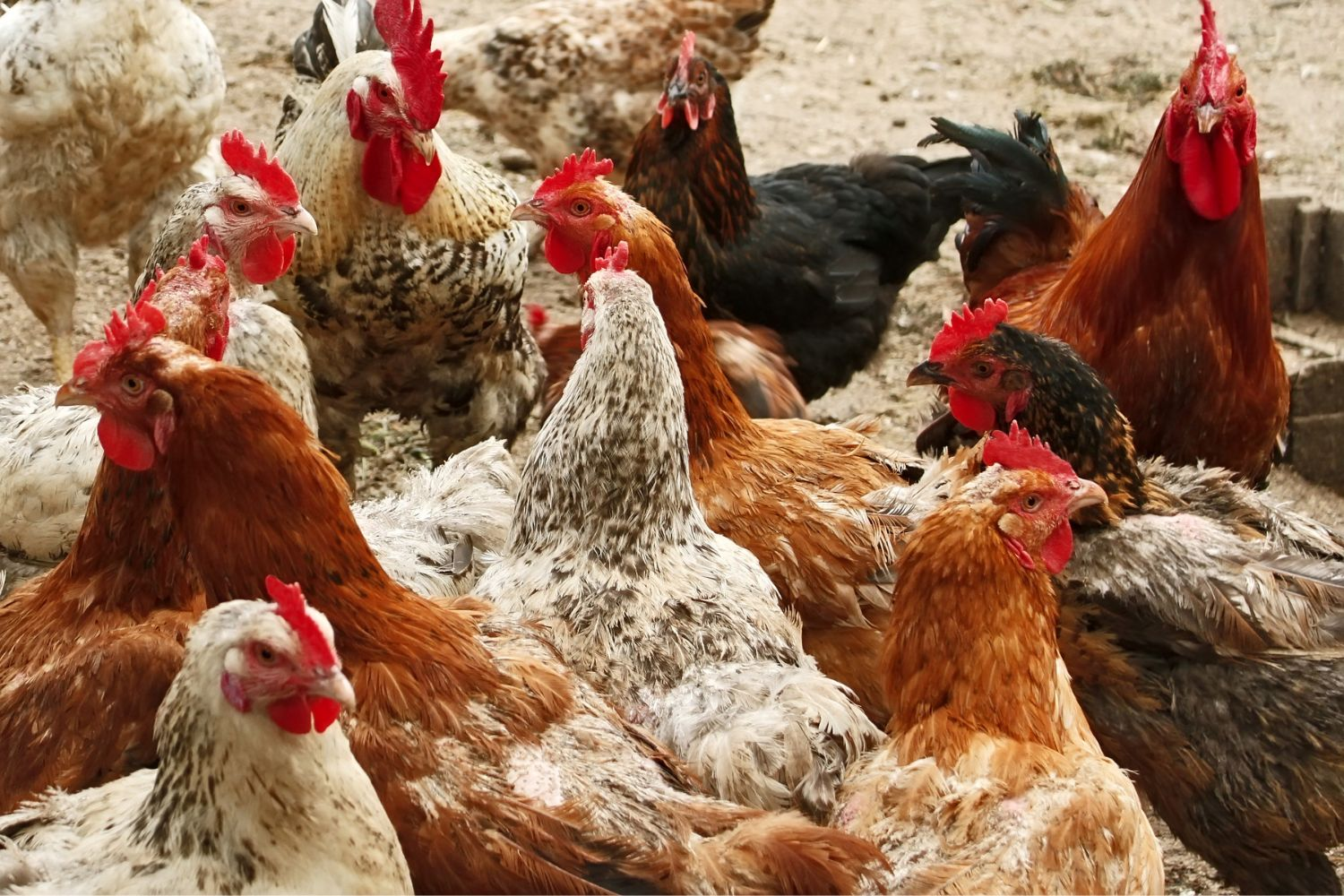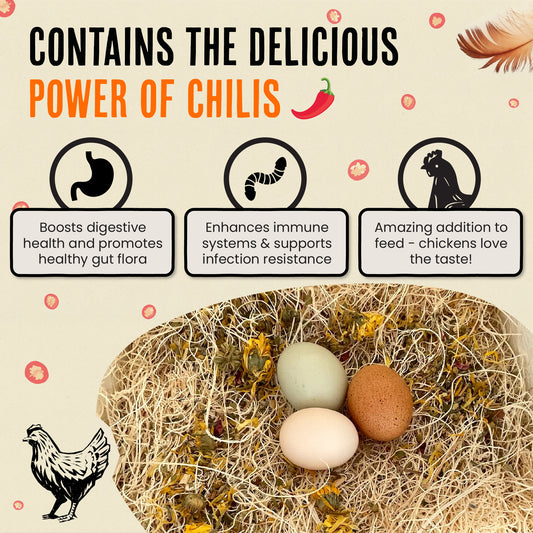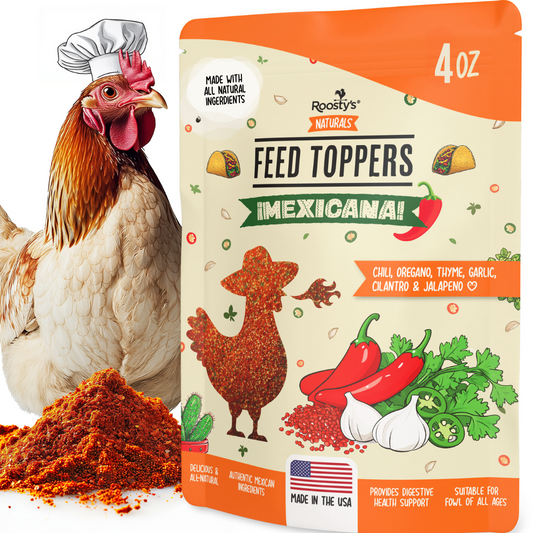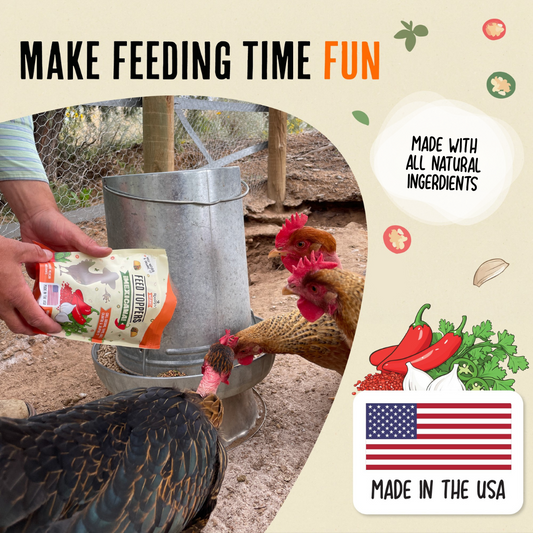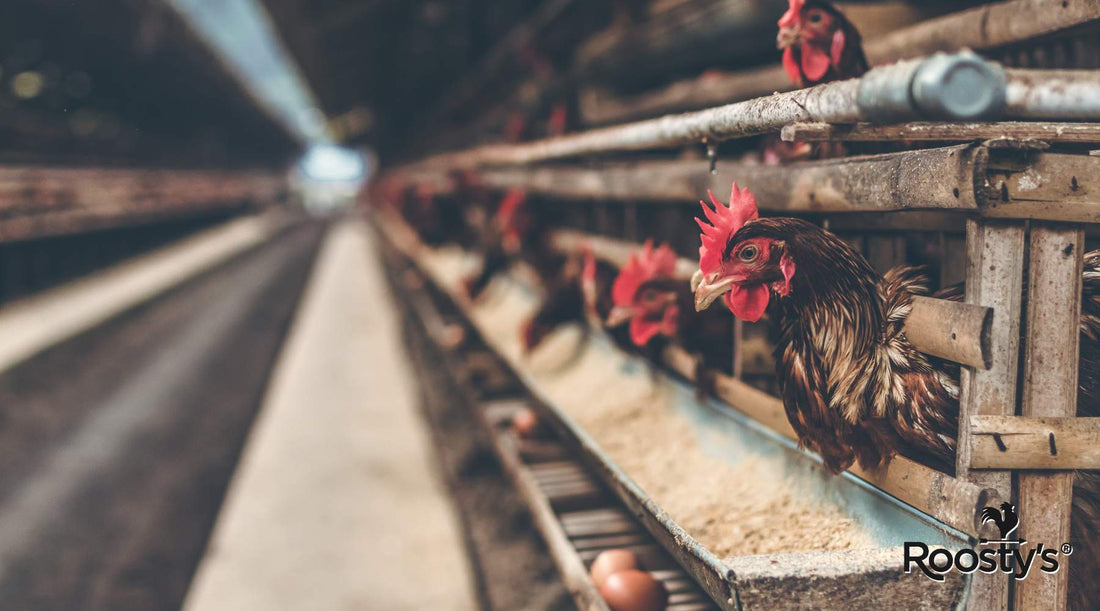
Chicken Feed for Laying Hens: Essential Nutrients and Tips

So, you’re thinking about keeping laying hens on your land but feel unsure about where to start regarding their feed?
Don’t worry, we’ve all been there (or at least I have) but this guide to chicken feed for laying hens will help you hatch the perfect strategy.
Egg production was down 2% in August 2022 from where it was one year earlier and this year’s figures are expected to show a similar trend.
This makes it the perfect time for you to start breeding laying hens. If you do, though, it’s crucial that you educate yourself on the topic of chicken feed for laying hens.
In this guide, I’ll use my experience as a chicken farmer along with additional research to answer all of your key questions such as;
- What should a laying hen’s diet look like?
- Why is nutrition so vital for egg layers?
- Which kitchen scraps are safe or not safe?
- What age do I feed a chicken egg maker feed?
- Are extra steps needed on how to feed a not adult chicken?
Take note of my advice, and your laying hens will be clucking with joy in no time.
What Should a Laying Hen’s Diet Look Like?
Before looking at feeding accessories for your laying hens, it’s important to understand what your poultry’s diet should consist of.
Firstly, you should consider the volume of food that a laying hen consumes. While there may be slight contrasts depending on the size of your laying hens, most will need 100-150g (0.25 lbs) of feed per day.
Crucially, though, you must also pay attention to the nutritional makeup of their feed. The key factors to understand are;
- Aim for 16-18% protein - remember too much protein is as dangerous as too little.
- Check that their diet provides minerals and vitamins, especially vitamin D.
- Confirm that your chicken feed for laying hens includes fatty acids.
- Aim for between 2.75% and 3.4% calcium.
- Look to have no more than 10% fiber.
A laying hen’s nutrition can come courtesy of pellets, mash, or scratch while it may also be topped up by kitchen scraps.
Why is Chicken Feed for Egg Layers Important?
Nutrition isn’t the only key ingredient in the recipe for raising happy and healthy hens.
Nevertheless, finding the right chicken feed for egg layers should be considered a priority. A controlled diet will deliver many benefits, including but not limited to;
- Keep your hens at a healthy weight,
- Improve the hen’s behavior and wellbeing.
- Save you money - feed accounts for around 70% of the egg production’s cost.
- Improve the quality of the eggs.
- Support good health in their offspring.
Contrary to common opinion, free-range chickens only account for around 1% of the nation’s chicken farming population.
While it is an ideal way to nurture healthy and happy chickens, it should be noted that this is a husbandry matter rather than a dietary one.
Free-range laying hens will have very similar dietary requirements and
How to Feed a Not Adult Chicken
Even if you begin your journey with adult laying hens, you will inevitably end up with infant chickens at some stage.
This is one area where I often get questions from concerned and relatively inexperienced chicken farmers.
You are right to assume that growing hens need special care during this process. Laying hens usually start laying eggs at around 18 weeks.
Supporting them with a good diet leading up to this age is vital. The following advice will point you in the right direction;
- Birth to 8 weeks (chicks): choose a starter feed of proteins, amino acids, vitamins, and minerals.
- 8 weeks to 16 weeks (pullets): select grower feed with a slightly lower protein level but high levels of omega-3s.
- 16 weeks+ (laying hens): at this stage, transition to the above mentioned diet with 16-18% protein, calcium, etc.
In addition to selecting the right nutritional makeup, you must develop a strategy to get your chicks used to eating.
This video guide will provide valuable insights. However, if you find an alternative solution that works (and is safe) my advice is to stick with it.
8 Great Tips on Chicken Feed for Laying Hens

Appreciating the importance of nutrition for laying hens as well as the essential nutrients will provide a strong platform to build upon.
However, it’s equally important to equip yourself with the right feeding habits.
Otherwise, you will encounter a lot of stressful moments and could inadvertently limit the health benefits seen by your hens.
Research shows that egg layers lay at a rate of 82 eggs per 100 hens.
The right strategies will boost your hopes of hitting this mark while also aiding the quality of eggs produced.
Here are my top tips on the topic of chicken feed for egg layers:
#1. Prioritize Uniform Feed
As mentioned, you can feed chicken via pellets, mash, or scratch. The key to choosing the right feed is to opt for uniform feeds.
This means a feed, like pellets, that has the same ingredients in every piece.
I can tell you from experience that hens aren’t as different to humans as you might expect.
They will naturally eat the foods that they enjoy most. So, when you do not have a uniform feed, this could make it difficult for you to monitor exactly how much feed has been eaten.
#2. Know Your Kitchen Scrap Options
Kitchen scraps can be a good option, especially as a treat and to add some variety.
Naturally, it is a move that can bring the costs of feeding your hens down too. However, it’s imperative that you select the right type of kitchen scraps.
Beef and pork scraps, fresh fruit, stale bread, cooked vegetables, eggshells, dairy, and fish skin (not bones) are all good choices.
Avoid processed foods, chocolate, chicken scraps, and pure salt. Of course, you should keep their daily food volumes in mind too.
#3. Focus on Consistency
It is scientifically shown that chickens and hens display the same complex cognition, emotion, and behavior traits as other birds and mammals. They are also known to forage for food.
This will become particularly more noticeable when unsure of the next meal.
As a farmer or breeder, you should look to top up their feed at the same times each day.
When combined with a clear routine, hens become accustomed to the signals that it’s time for feed. In turn, their behaviors will change, making it easier for you to manage nutrition.
#4. Keep Feed Stored Correctly
Choosing the right chicken feed for laying hens is one thing, but it counts for very little if you allow it to become spoiled.
It may be tempting to buy vast volumes of chicken feed in advance, not least for the bulk purchase savings. But this is an ill-advised move.
It is recommended that you keep feed stored for no more than 2 months while it must also stay in a cool, dark place.
Feed loses nutritional content after this stage. And, take it from me, the threat of mold contamination is very real.
#5. Invest in the Right Chicken Feeder Accessories
When you have multiple laying hens on your land, you will notice that there is a natural pecking order.
Sadly, if feed is not distributed correctly, you run the risk of dominant birds becoming obese and subordinates not getting enough nutrition.
A feeding unit helps manage the volume of food that individual laying hens take on.
When you have multiple birds, though, it’s a good idea to have multiple units stationed at different locations to ensure that all hens can gain access to feed.
#6. Never Overlook Hydration
As well as ensuring that all laying hens receive the right amount of food, it’s vital to keep them hydrated.
After all, laying eggs does take a physical toll on your poultry. With this in mind, adapting their water consumption is a crucial step.
Daily water intake should be around 115g when not laying eggs but increase to 255g on days when legs are laid.
If you do not get this right, your hen’s wellness will see a noticeable decline. Conversely, getting it right can support their recovery.
#7. Choose Chick Feeders for Maturing Hens
I’ve already mentioned the benefits of chicken feeders. However, they are even more noteworthy when dealing with chicks and pullets.
Chick feeders with low access make it easier for chicks to get their feed. They can be combined with adjustable waterers.
Aside from providing accessibility for young chicks, it allows you to ensure that they gain the right nutrition at each stage of their upbringing.
This will promote increased health for the birds and future offspring while also boosting the quality of eggs.
#8. Avoid Fasting During the Molt
Egg layers will molt, with the process starting anywhere between six and 14 months after they begin producing eggs.
Early molters feathers slowly but late ones will lose them quickly. Either way, your hens could lose up to 25% of their body weight.
During this time, it may be tempting to significantly reduce their feed. However, this is shown to have an adverse effect and is actually illegal in some locations.
Conversely, when you achieve success through this stage, egg quality will increase in the post-molt cycle.
The Final Word
Finding the best chicken feed for laying hens should be a priority for all poultry farmers because it influences their health, happiness, and egg production.
I also guarantee that it will make other aspects of flock management, especially as it’ll put you in the right frame of mind.
For more information on feeding your hens in the correct fashion, contact our friendly sales advisors today.
